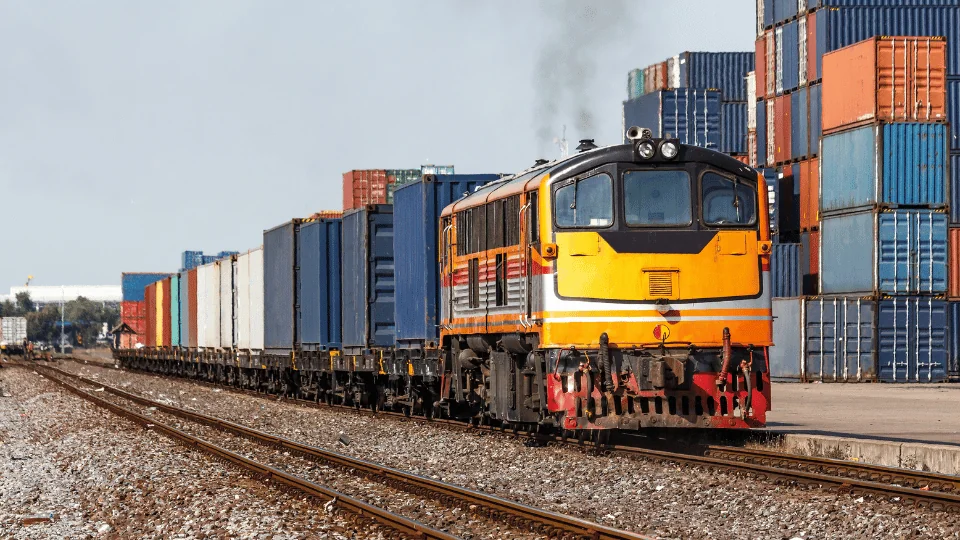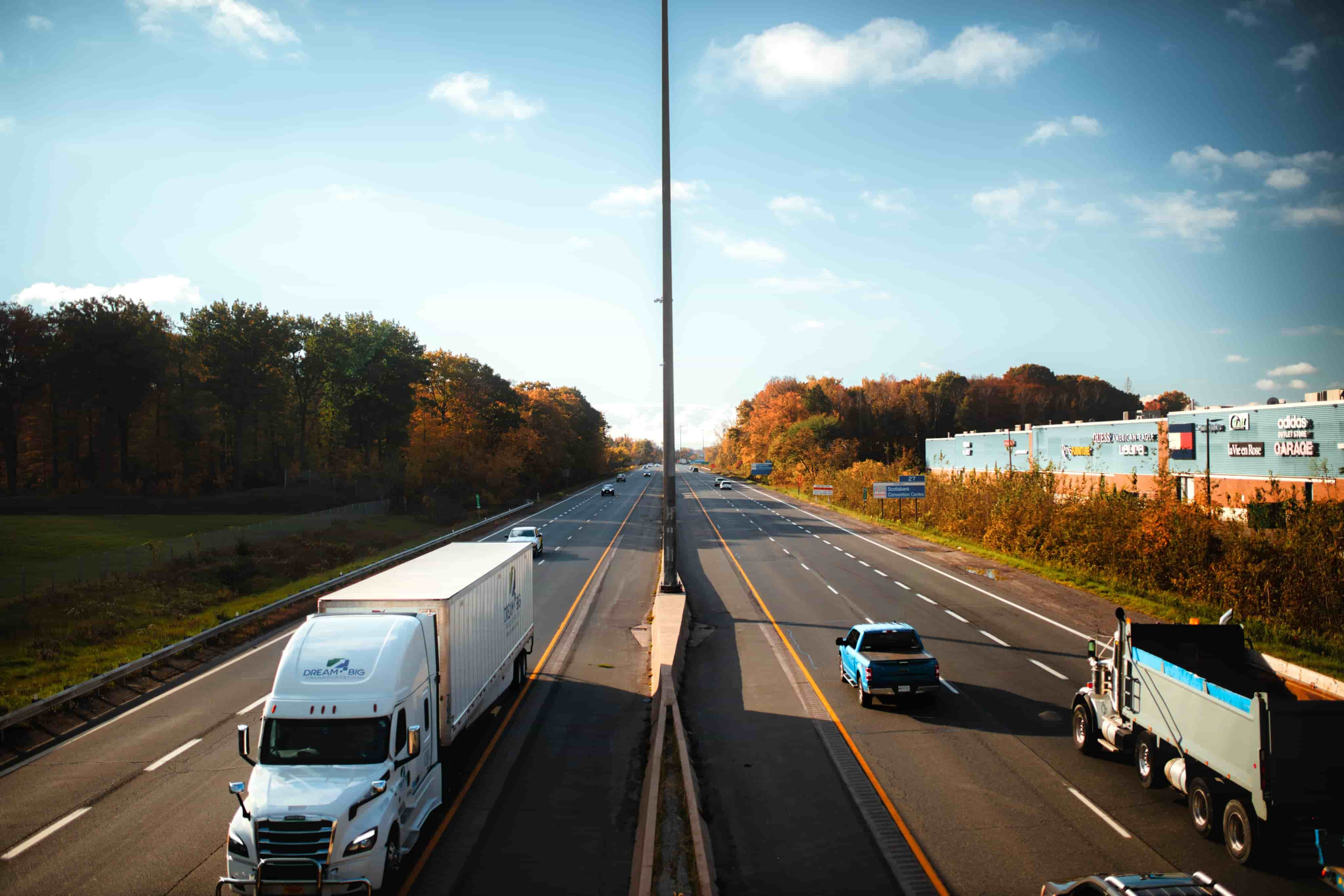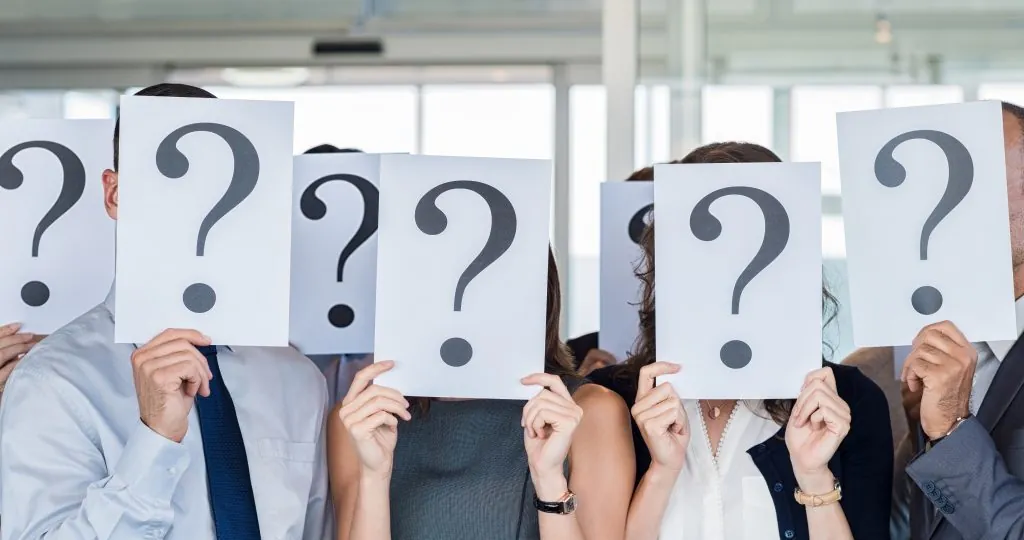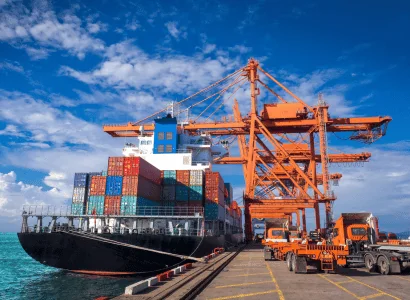
Most Common Freight Modes
Discover the Best Freight Transportation Modes for Your Business
Shipping freight doesn’t have to be complicated. Whether you’re moving goods across the country or around the globe, understanding the four primary freight transportation modes—road, rail, air, and ocean—can help you choose the most efficient and cost-effective option.
Shipping freight doesn’t have to be overwhelming. Whether you’re moving goods across the country or shipping internationally, understanding the different freight transportation modes (road, rail, air, and ocean) can help you make smarter decisions that align with your timeline, budget, and freight shipping needs. Each mode offers unique advantages; however, the right choice depends on where you’re shipping, what you’re shipping, and how fast it needs to get there.
At FreightCenter, we make it easy to navigate all four freight modes by giving you access to a nationwide network of trusted carriers, competitive rates, and expert shipping support. Whether you’re booking a less-than-truckload (LTL) shipment, arranging ocean freight for international goods, or need a fast air cargo solution, our team helps you compare options and manage logistics from start to finish, all in one place.
Thousands of businesses trust FreightCenter to move their freight faster, smarter, and cheaper! From unbeatable rates to top-notch service, our customers are raving about their shipping success.
See why they keep coming back!
Award-Winning Service, Trusted by Shippers Everywhere!
- 2021, 2017 & 2016 Food Logistics’ Top Green Providers
- 2021 & 2018 Supply & Demand Chain Executives’ Pros to Know: Matthew Brosious
- 2020 & 2019 Top Food Logistics’ 3PL & Cold Storage Provider Award
- 2020 & 2019 Business Observer’s Top 500 Companies on the Gulf Coast
- 2020 & 2017 SmartWay® Transport Partner
- 2020 & 2017 Food Logistics’ Champions: Rock Stars of the Supply Chain
- 2020 Best of Palm Harbor Awards for Local Businesses
- 2017 Green Supply Chain Award from Supply & Demand Chain Executive
- 2017 Tampa Bay Business Journal Heroes at Work
- 2016, 2015, & 2012 Food Logistics Top 100 Software and Technology Providers
- 2013 Tampa Bay Business 100 by Tampa Bay Business Journal
- 2013 Top 100 Great Supply Chain Partners by SupplyChainBrain
- 2012 TIA Samaritan Award Honorable Mention
- 2012, 2011 & 2010 TBBJ Fast 50 Recipient
- 2013, 2011, & 2010 Diversity Business Top Businesses

Why Shippers Trust FreightCenter for All Freight Transportation Modes
Decades of Industry Experience: FreightCenter has been helping businesses ship smarter since 1998. With over 25 years of experience in the freight industry, we know the ins and outs of every shipping mode and how to navigate challenges so your freight gets where it needs to go—on time and on budget.
Access to a Vast Network of Vetted Carriers: We’ve built strong relationships with top-rated carriers across road, rail, air, and ocean freight. This means our customers get more options, better pricing, and confidence that their shipments are being handled by reliable professionals.
Customized Shipping Solutions: No two shipments are alike. Whether you’re moving pallets, oversized machinery, or international goods, we tailor every freight quote and shipping plan to fit your unique needs—so you never overpay or compromise on service.
Dedicated Support: When you book through FreightCenter, you don’t just get a shipping rate—you get a shipping partner. Our in-house team of freight account and customer care agents is always here to answer questions, solve problems, and keep your freight moving smoothly.
Competitive Pricing: Because we work with such a wide range of carriers and modes, we’re able to offer highly competitive rates without sacrificing service. Whether you’re shipping by truck, train, plane, or ship, we help you find the most cost-effective option that meets your delivery goals.
What Are the Main Freight Transportation Modes?
Freight doesn’t just move by itself. Transportation companies work tirelessly to move their cargo from one destination to another, whether that destination is just across the street or across the globe. While there are many ways to move freight, the industry relies on four main transportation methods. The freight modes are suited for different types of cargo, distances, and delivery timelines, but all serve an important role in logistics.
The four freight modes of transportation for freight shipping include the following:
- Road
- Rail
- Ocean
- Air
To understand which types are right for your shipment, let’s take a deeper dive into each type and understand what shipments they are best for.

Road Freight Shipping (Trucking)
Road freight is the most commonly used mode of transportation in the United States—and for good reason. It offers unmatched flexibility for shippers of all sizes, with the ability to transport freight to virtually any location, including warehouses, retail stores, job sites, and residential addresses. Whether you’re moving a full truckload (FTL) of commercial inventory or a few pallets via less-than-truckload (LTL), trucking is a dependable and accessible solution for short- and long-distance shipping alike.
Road freight transportation is best for:
- Regional and cross-country deliveries (though it can be used for international shipping if the countries are connected by land)
- Retail, manufacturing, and eCommerce freight
- Palletized, packaged, or boxed goods
One of the biggest advantages of road freight is its door-to-door service, eliminating the need for additional modes of transport for last-mile delivery. It also allows for faster transit times on regional routes and is typically more affordable for domestic shipments compared to air freight. Plus, with options for temperature-controlled, flatbed, and specialized equipment, trucking can accommodate a wide variety of freight types and requirements.
FreightCenter’s Advantage:
FreightCenter simplifies road freight shipping by giving you instant access to competitive quotes from top LTL and FTL carriers nationwide. Our easy-to-use platform lets you compare rates, book shipments, and track deliveries—all with support from a team of logistics experts who are just a call or click away. From small business shipments to large enterprise freight moves, we make road freight shipping efficient, affordable, and stress-free.

Rail Freight Shipping
Rail freight is a smart, cost-effective option for moving large volumes of goods over long distances across the country. It’s especially valuable for bulk commodities and heavier freight that would be expensive or inefficient to move solely by truck. Often used as part of an intermodal strategy, rail can serve as the core leg of a shipment, with trucking solutions that handle the first or last mile.
Rail freight transportation is best for:
- Heavy or bulk commodities (e.g., metals, lumber, chemicals)
- Long-haul domestic shipments
- Intermodal freight paired with trucking
Rail is one of the most fuel-efficient and eco-friendly shipping methods available, making it ideal for companies focused on sustainability. It also offers consistent transit schedules, high load capacity, and lower costs per ton-mile compared to road freight. For shippers moving heavy or non-time-sensitive cargo—like raw materials, construction supplies, or agricultural products—rail is often the most economical choice.
FreightCenter’s Advantage:
FreightCenter helps businesses take advantage of rail freight by coordinating every detail of the shipment, including intermodal transfers and rail ramp access. We work with a trusted network of rail carriers and logistics partners to ensure smooth scheduling, clear communication, and efficient handling of even the most complex freight loads. Whether you’re shipping across the state or across the country, we make rail shipping simple and scalable.
Once you are certain of which of the freight modes you wish to utilize, you'll need to find solutions that fit best with your shipping needs. FreightCenter offers a variety of shipping options that get your freight to its destination on time, while cutting down costs. Here are some of our tailored shipping solutions and which of the freight modes work best for each.
LTL is ideal for shipments that don’t require a full trailer—perfect for smaller freight that’s too large for parcel delivery but too small for full truckload. It’s most commonly used with road freight, one of FreightCenter's specialties. We make it simple to compare LTL carrier rates, book shipments online, and track deliveries with the help of our LTL sales team.
FTL shipping is the best choice when your freight can fill an entire trailer or when you need exclusive use of a truck. This solution is primarily used by road transportation and is perfect for large, high-volume, or sensitive shipments. FreightCenter connects shippers with reliable truckload carriers and negotiates competitive rates based on lanes, equipment, and timing.
Partial truckload works well for shipments that are larger than LTL but don’t require a full truck. It’s a flexible road freight transportation option that avoids some of the handling stops typical of LTL. FreightCenter helps you find cost-effective partial load solutions by matching your freight with carriers who have extra trailer space available.
When time is critical, expedited shipping speeds up delivery using the fastest route available. This solution can be done using all freight modes, but works best with road and air freight transportation modes due to their speeds that can handle distant but urgent shipments. FreightCenter offers same-day, next-day, and two-day options through a network of express carriers and airlines, ensuring your shipment arrives on time, every time.
Intermodal shipping combines multiple freight modes—typically rail and road—to create an efficient, budget-friendly solution for long-distance or high-volume freight. FreightCenter coordinates the entire process, managing rail line access, container transfers, and final-mile trucking so you don’t have to juggle multiple providers.
When shipping overseas, international freight moves primarily by ocean or air freight transportation, depending on urgency, volume, and budget (though you can use rail or road freight modes if countries are connected by land). FreightCenter helps shippers navigate the complexities of international logistics with support for customs documentation, port coordination, and global carrier connections.
For perishable or temperature-sensitive freight, refrigerated (reefer) shipping is essential. This solution works across road, air, and ocean freight modes depending on distance and product type. FreightCenter connects you with carriers equipped for climate control, ensuring your goods stay within required temperature ranges throughout transit.
Heavy haul solutions are designed for large, bulky, or non-standard, oversized loads that requires special permits and handling. These shipments usually move via road or rail, though ocean can be used depending on the product type or distance. FreightCenter specializes in coordinating equipment, route planning, and compliance to move oversized freight safely and efficiently.


Learn more about the most common freight modes with FreightCenter!
Choosing between road, rail, air, and ocean freight can feel overwhelming—especially when you’re balancing deadlines, budgets, and cargo requirements. That’s where FreightCenter comes in. We take the guesswork out of shipping by helping you compare the most common freight modes side by side based on your shipment’s size, urgency, and destination.
Our experienced shipping specialists work with you to understand your needs and find the most efficient, cost-effective transportation mode for your freight. Whether you’re shipping locally or internationally, moving lightweight parcels or oversized machinery, we provide clear options and expert guidance every step of the way.
Ready to make shipping easy? Call us at (800) 716-7608 or get a free online quote now through our instant quoting system to begin shipping with us today!
Frequently Asked Questions about the Most Common Freight Modes

Q. What are the most common freight transportation modes?
The four most common freight modes are road, rail, air, and ocean. Each serves a unique purpose depending on your shipment’s destination, size, urgency, and budget. FreightCenter works with all four modes and helps shippers choose the best one based on their specific shipping needs.
Q. What are the differences between the four most common freight modes?
Each freight transportation mode serves a distinct purpose. Road freight is the most flexible and widely used for domestic shipping. Rail freight is ideal for heavy or bulk goods moving over long distances inland. Ocean freight is best for large, international shipments where transit time is not urgent. Air freight offers the fastest delivery, perfect for time-sensitive or high-value cargo. FreightCenter helps you weigh these differences by offering expert insights, cost comparisons, and easy access to all four modes in one place.
Q. How do I choose the right freight mode for my shipment?
Choosing the best mode depends on several factors: how fast your shipment needs to arrive, how much it weighs, how far it’s traveling, and your budget. FreightCenter simplifies this decision by comparing options across all freight modes and offering expert recommendations based on your shipment details.
Q. Is rail freight cheaper than trucking?
Yes, in many cases, rail freight is more economical for large or heavy shipments traveling long distances. Rail can move a higher volume at a lower cost per ton-mile. FreightCenter helps coordinate rail shipments and often combines them with trucking for intermodal solutions that offer the best of both worlds.
Q. What kind of freight can be shipped by rail?
Rail is perfect for bulk commodities like lumber, metals, chemicals, and other industrial freight. It’s especially useful for shippers who need to move large quantities over long distances. FreightCenter helps match you with rail carriers and coordinates pickup and delivery as part of an end-to-end logistics solution.
Q. What types of shipments are best suited for ocean freight?
Ocean freight is ideal for large or heavy shipments that aren’t time-sensitive. It’s a great choice for international imports or exports and supports both full container load (FCL) and less-than-container load (LCL) options. FreightCenter helps handle the logistics of ocean shipping, including documentation and customs coordination.
Q. When should I use air freight instead of other modes?
Air freight is best when speed is critical. If you need to ship high-value, time-sensitive, or perishable goods, air is the fastest option. FreightCenter connects you with trusted air freight carriers and handles scheduling, documentation, and tracking so you don’t have to worry about delays.
Q. Which of the four most common freight modes is more expensive?
Air freight is typically more expensive due to the speed and efficiency it provides, but the exact cost depends on your shipment’s weight, dimensions, and route. Ocean freight is also expensive due to the distance and customs costs. While road and rail transportation is less-expensive, they do have more expensive options for shipping, including expedited shipping.
If you’re on a tight schedule or shipping high-value items, the extra cost may be worth it. FreightCenter helps you compare air rates with other freight modes to find the best balance of speed and cost.
Q. Can I use more than one freight mode?
Yes, you can use more than one of the freight modes of transportation if you wish. Intermodal shipping uses two or more freight modes—usually rail and truck—to move a shipment from origin to destination. It’s a cost-effective and environmentally friendly solution for long-distance freight. FreightCenter manages the entire process, from container transfers to coordinating both rail and trucking segments, so your shipment stays on track.
Q. What are some less common freight modes?
While road, rail, air, and ocean dominate the freight industry, there are a few lesser-used modes that serve specialized needs. Pipeline transport is one, primarily used for moving liquids and gases like oil or natural gas. Inland waterways—such as rivers and canals—are also used in some regions for bulk freight, especially in agricultural or industrial sectors. Though these modes are more niche, FreightCenter focuses on the most widely available and accessible solutions—road, rail, air, and ocean—while guiding shippers toward the best option for their cargo and route.
Three Interesting Facts about the Most Common Freight Modes

Rail freight transportation is one of the most energy-efficient shipping methods.
Rail can move one ton of freight nearly 500 miles on a single gallon of fuel, making it an incredibly eco-friendly option for long-distance, heavy shipments. It’s often a smart choice for shippers looking to reduce their carbon footprint—especially when paired with intermodal trucking solutions.

Air freight accounts for less than 1% of total global freight by volume—but about 35% by value.
Because air freight shipping is used primarily for high-value, time-sensitive goods like electronics, pharmaceuticals, and luxury products, it carries a disproportionately high share of global trade value despite its small volume footprint.

Ocean freight shipping is the backbone of international trade, yet the average speed of a cargo ship is just 16–18 knots (about 18–21 mph).
It’s not fast—but it’s incredibly cost-effective and scalable, with some of today’s mega container ships capable of carrying over 24,000 TEUs (Twenty-foot Equivalent Units) in a single voyage. That’s the equivalent of over 14,000 full truckloads!



